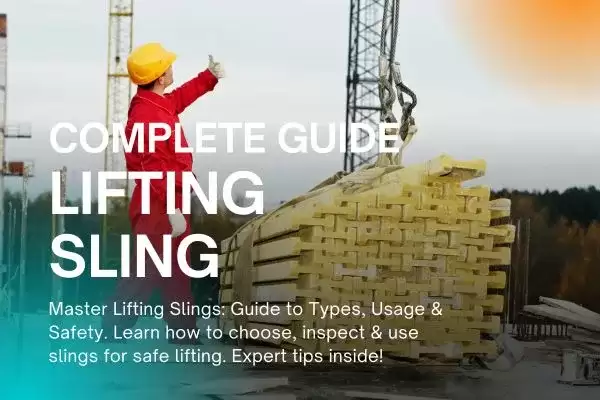100 %

Sep 1,2023
It's fantastic to have access to lifting slings. As the name indicates, they're used to lift things, often by laying them out beneath the object to be raised to make a sling that can be lifted safely and securely by a crane. However, there is a wide variety in both their composition and use.
Lifting slings are used to lift oversized, bulky items that lack attachment points. A pile of metal pipes, a pallet of cement blocks, or any other large, awkward item are all examples of things that can need lifting. Each end of a sling has an eye so that it may be hooked into a crane or other kind of lifting equipment. Roundslings are another option. These are essentially similar but are made to be a single strand. Typically, a lifting hook is hooked through the round sling after it has been wrapped around the item.
Lifting slings may last up to five years if properly maintained. However, inspections must be performed at least once every six months to comply with the law. You should check for snags, breaks, frays, and stretched areas to ensure no component failures during heavy lifting. Workplace accidents may be avoided by replacing a sling when any signs of wear are discovered.
The four most prevalent sling materials are nylon, polyester, wire rope, and chain. All of them are made from various materials to accommodate multiple purposes. China wholesale lifting slings, however, are always offered by specified length and weight. So, be sure the sling you're using is safe and secure for the task at hand.
When the sling's flexibility is essential, nylon slings are perfect. They are sturdy despite their small weight, increasing the load a crane can lift. They benefit things like liquid or fragile loads since they may stretch by 6-8% of their nominal length. However, nylon may become brittle if it absorbs water, which can happen if liquid loads aren't controlled effectively.
Like nylon slings, polyester slings may stretch (albeit less than nylon, at 3% of nominal length). Still, they also have the additional virtue of being safe to use while handling open liquids and in environments with acids and bleach agents. Due to their webbed construction, they are also often called web slings or rigging slings. As a bonus, polyester slings are ideal for lifting boats, where surface marking of the material should be avoided.
The strands of wire in wire rope make up the rope's form. To create a thicker, more robust rope, wires are wrapped around a core, just as fiber strands are twisted together to create a natural rope.
Somewhat counterintuitively, the bigger the number of strands a wire rope has around its center, the greater its flexibility. Because its tensile strength is greater near its center, it is more bending-resistant.
Chain slings are typically made from a high-grade steel alloy and put through their paces in the most demanding lifting situations. The versatility of these hooks allows them to be used with a wide variety of lifting assemblies, but they need special attention to prevent rust and corrosion.
Depending on the weight, size, density, and center of gravity of the lifted load, there are many different methods to sling ropes. The hitch utilized for the sling, if any, also requires careful consideration. For instance, you shouldn't utilize more than 75% of the sling's nominal lifting capability to lift using a 'choker hitch' (where the sling hooks through itself). Remember that the lifting point should be squarely above the load's center of gravity and that adequate securing of the load is paramount. This prevents the load from toppling over while lifting.
As was previously noted, slings must undergo a legal inspection every six months. However, examining each usage is a prudent best practice for preventing mishaps.
Even while only a qualified professional should do official sling inspections, you should still watch for things like faded or missing identifying markings, acid burns, lost or missing hardware, and any melting or discoloration.
Always keep the following in mind while using lifting slings for any lifting.
In no circumstances can a damaged lifting sling be used. A broken sling might result in the load being dropped, resulting in serious injuries or even death on the job and costly damage to machinery. Before lifting slings, ensure they are constantly in good condition.
Webbing slings and round slings are the two primary forms of lifting slings. Round slings are more adaptable and can conform to non-standard load forms, whereas webbing slings provide a wider surface area to protect the load.
The weight of the load you're lifting will dictate the kind and size of lifting sling you'll require. A lifting sling with a Working Load Limit of 20 tons rather than 15 tons would be necessary to hold the weight of a load of 17 tons. The WLL of each lifting sling varies. If you lift more than this, you risk breaking the lifting sling and maybe dropping the load. Our Slings' WLL is listed prominently on each product page.
All slings must be fastened to the load to ensure the most significant amount of control and prevent any loose sections of the load from shifting or sliding. A well-trained worker would know how to rig and connect the slings.